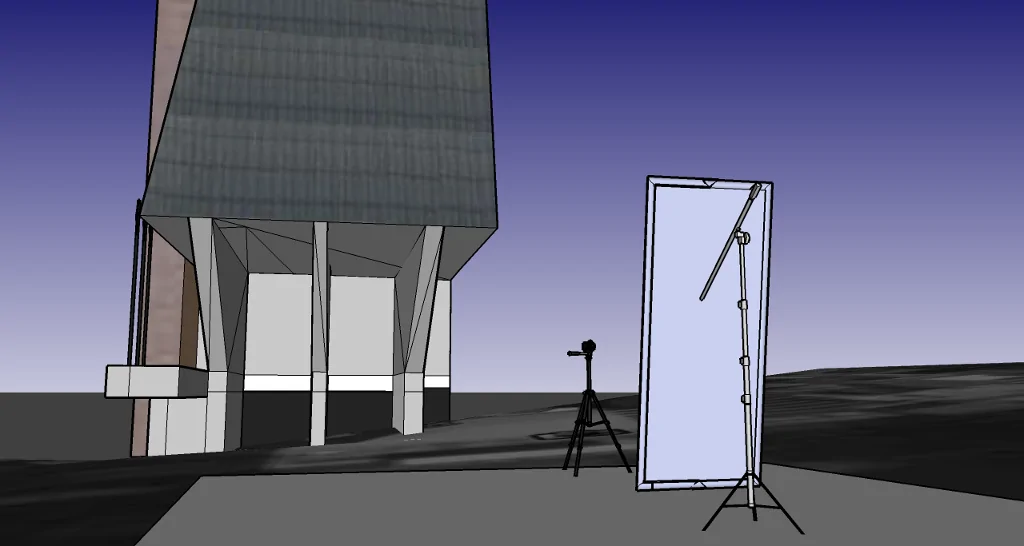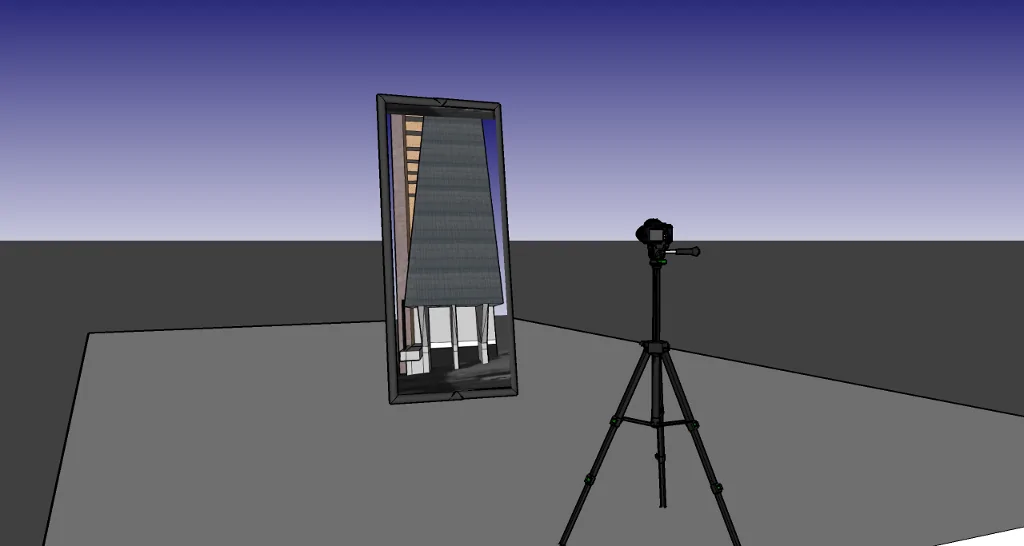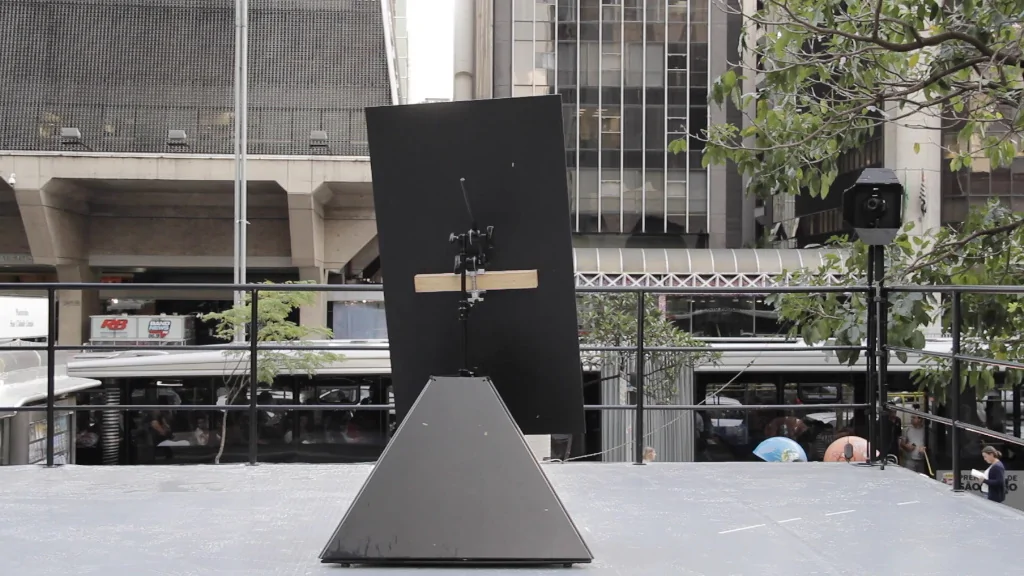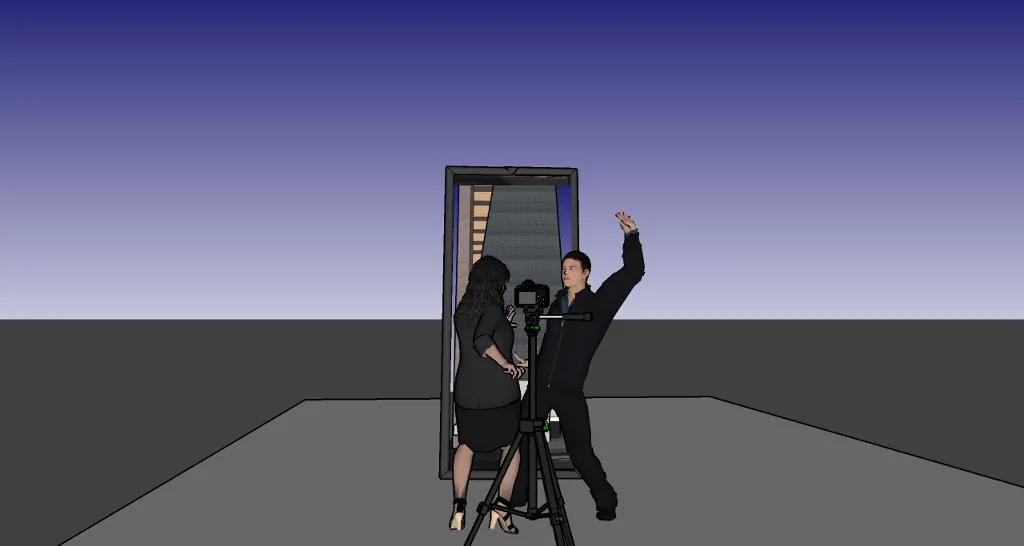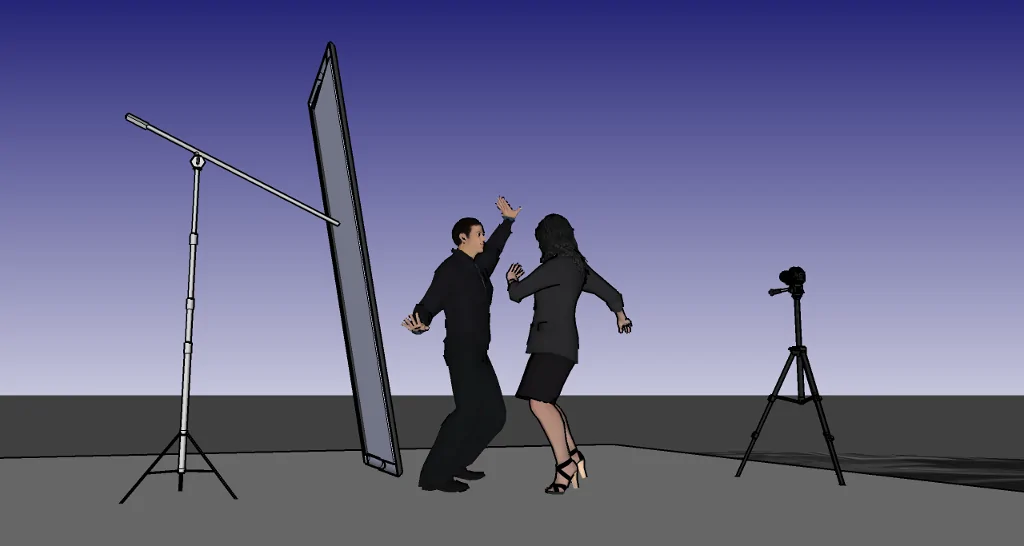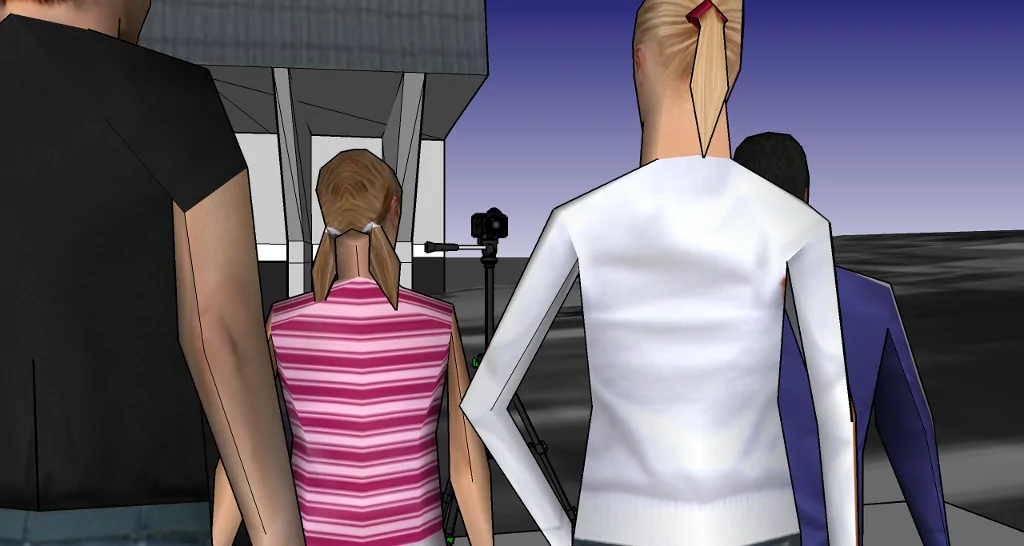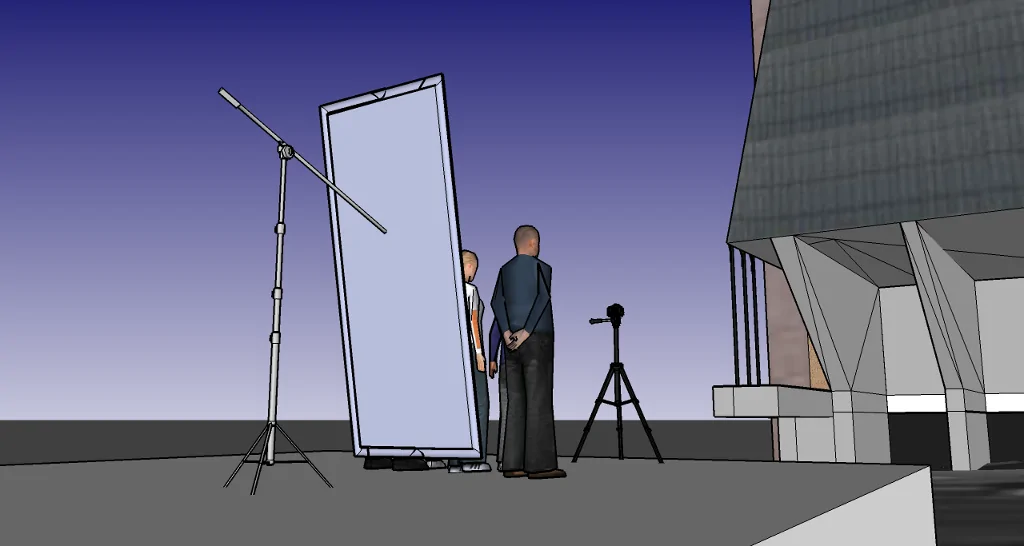Title 0.25 FPS
Motivations As we keep racing to make our communication devices better, faster and smaller, it is not hard to imagine a future where social interaction gets completely relegated to the virtual. A future where we become solely concerned with sending (and “trending”, “like-ing”, etc) using apps and other digital interfaces that promote this kind of incessant, unilateral broadcasting.
How can we make sure our interactions still impart a sense of uniqueness and specialness for the people involved, and that our personalities don’t get optimized out of our own communication processes?
Can we use physical spaces to give significance to otherwise commonplace exchanges by creating collective experiences that live beyond their immediate production/consumption cycle?
Description
This project proposal is for a public art installation that promotes a more physical, kind of interaction. It is inspired by a very analog and classic version of an afterimage, namely, the short-term blindness due to oversaturation of the retina that results from having your picture taken with a strong flash. We don’t want to blind anyone; we want to use the FIESP façade to flash short-lived images and provoke the audience to create their own narratives and meaning from such brief stimulation. In an almost paradoxical attempt to saturate the audience with small amounts of information, we hope to create a different kind of interaction with the participants; one that lasts well after the initial flash has happened.
The installation consists of a camera and a mirror placed in front of the FIESP building. The camera faces the mirror, which reflects the building. The camera is programmed to automatically take a picture of the building, through the mirror, every couple of seconds, even when no one else is around. Every time a picture is taken, the building will flash white, and when the white fades, it will be replaced by a slightly processed version of the picture that was just taken, which will also quickly fade before the next picture is taken.
Participants will be able to walk in front of the camera and have their picture show up momentarily on the FIESP building. By enabling participants to create these short-lived spectacles in a public space, we are hoping to promote a different kind of communication that engages individuals with the surrounding architecture and other people around them.
Another way for the public to be involved with the project is through a workshop that we would like to host during the first week of the festival. During the workshop, participants will learn enough programming to be able to design their own filters and image effects, which will get incorporated into the installation.
Urban Digital Art
As a public art intervention, this project is a kind of homage to other forms of technology-mediated communications, like architecture and photography. On the one hand, this project can be seen as a minimalist sculpture and site-specific installation made up of a camera, a mirror and a building, where the building’s narcissistic tendencies reflect our own desires for self-promotion and self-importance accelerated and propagated by technology. On the other hand, the work is an open platform that invites direct participation and creates an opportunity for playfulness, social interaction and collective communication through the use of a simple interface that nonetheless transforms and reinterprets our urban landscape. It is an experience, without being a spectacle.
Summary
- we’re proposing to install a camera and a mirror in the area in front of the building
- the camera will continuously keep taking pictures of the building through the mirror
- every time a picture is taken, the building flashes white
- participants can interfere with these pictures by getting in front of the camera, thus showing up on the façade
- every picture taken shows up on the façade, sometimes overexposed, blurred, distorted, and then fades out
Illustrative Example
Radamés Ajna Brazilian multimedia artist with background in physics, mathematics and computation. Has worked as the coordinator for the interfaces lab at the Museum of Image and Sound, in São Paulo, and as a consultant for many media artists, designers, musicians, and architects, helping them create works with new technologies. As an educator, created the space Hacklab.es, teaching art and technology to students of various backgrounds. Was the recipient of a VIDA 15.0 Production Incentive award from Fundación Telefónica, with Thiago Hersan.
Thiago Hersan Oakland-based Brazilian. Used to design circuits for next-generation semiconductor manufacturing technologies. Interested in the interfaces and mediations inherent in human communication technologies. Currently working on interactive robotic toy design at BeatBots in San Francisco. Also a member of the art and design collective Astrovandalistas. Recently awarded an AiR residency at Autodesk, with Radamés Ajna.
Technical and Production Requirements
- Computer (mac or linux) to run an openFrameworks application
- Canon DSLR camera (t3i, 5D or 6D) and cable
- Tripod for the camera
- Mirror and tripod
Proposta Workshop A oficina tem como objetivo introduzir conceitos básicos de programação criativa, desmistificar o processo de criação, e criar um outro canal de participação da audiência com a faixada. Serão apresentados conceitos básicos da linguagem de programação Processing voltada para o aprendizado de técnicas de manipulação de imagem.
Serão 4 encontros de duas horas e meia cada, durante a primeira semana do festival, para no máximo 10 pessoas. Apesar de não ter pré-requisitos, pedimos aos participantes que tragam seus próprios computadores com a última versão do Processing instalada.
Durante o primeiro encontro vamos apresentar o nosso projeto, como ele dialoga com questões de comunicação, interatividade e arte no espaço público, e nossa interpretação do afterimage. Coletivamente, vamos discutir e propor outras possibilidades de afterimage coletivos, embasadas em ilusões de ótica, halucinações e abstrações.
Durante o segundo encontro, vamos discutir conceitos básicos de programação, como variáveis e funções. O terceiro encontro será voltado à estrutura de dados e à representação binária de imagens e cor. E durante o quarto encontro vamos ver como implementar alguns filtros e algoritmos de processamento de imagens.
